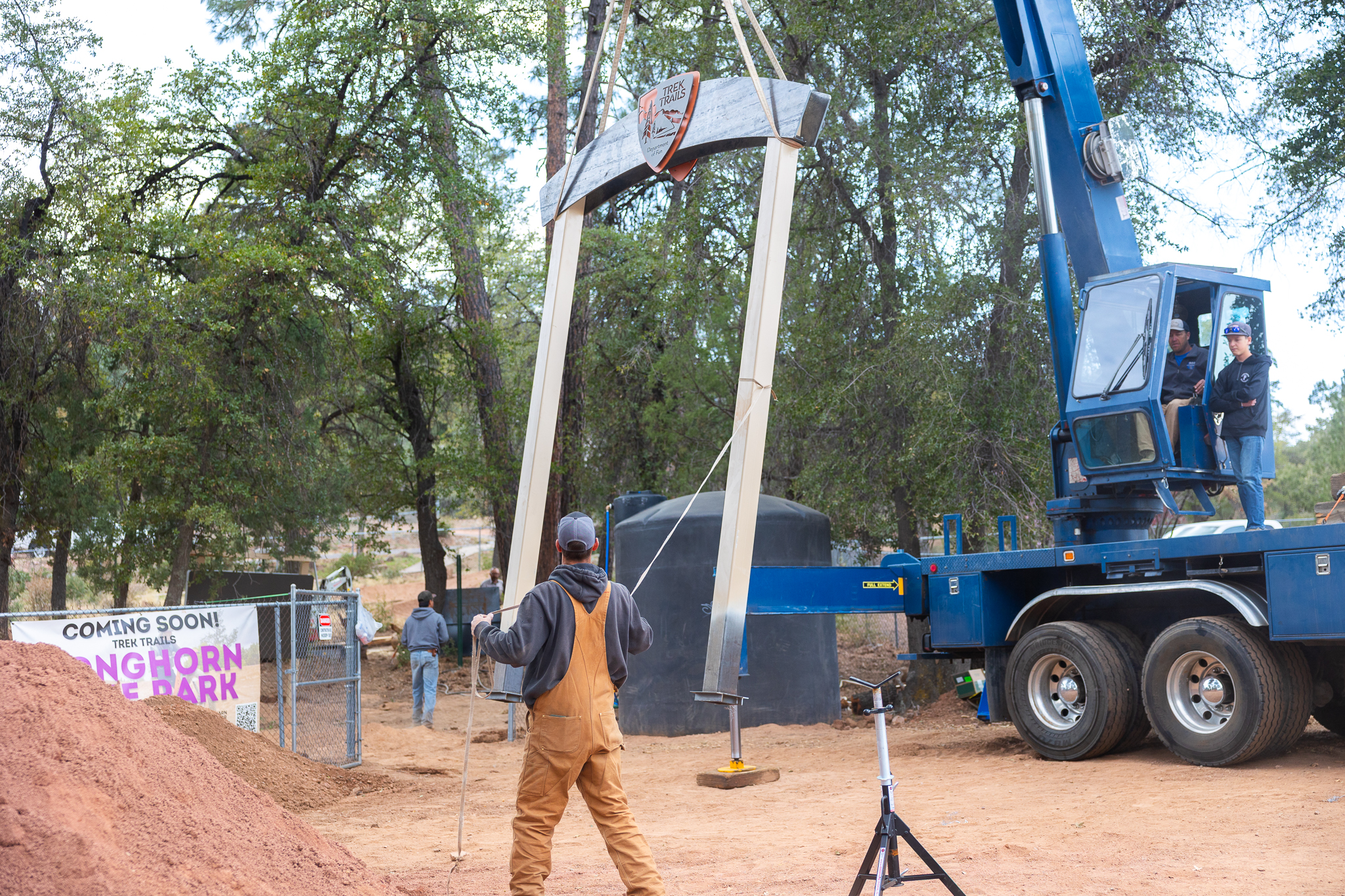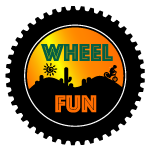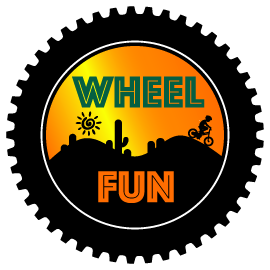
By Kevin Adams
So, you’re thinking of building a bike skills park? Excellent. Whether it’s for a school, a community, or a group of local riders, these parks are transformative. But they’re not easy. At Wheel Fun, we’ve helped build several bike skills parks in Arizona as part of our youth cycling and outdoor education programs, and we’ve learned a few things (some the hard way).
Before you start, we highly recommend you purchase a copy of Bike Parks, IMBA’s Guide to New School Trails. Best $30 you will ever spend. If you don’t like hardcopy or spending $$$ for books, you can download the book by clicking here. This book examines all phases of planning, designing, building, and operating bike skills parks.
But like all books, it can only take you so far. That’s where this blog comes in to share the real-world lessons we’ve learned on the ground.If you’re just getting started, here are 8 practical tips that will save you time, money, and a whole lot of stress.
1. Build the Biggest User Coalition You Can
Before you dig a single hole, build your crew. Parents, bike clubs, trail organizations, teachers, and local businesses should all be involved. Not only will they make your bike park project stronger, they often become fundraisers too. At Wheel Fun, we’ve even taken the lead on bike park fundraising when needed. You don’t have to do it alone.
2. Fence First, Everything Else Second
We’ve learned this one the hard way. The first thing you should build is the fence, even if it’s temporary. Why? The minute people see jumps going in, they’ll want to test them. That means safety issues, liability headaches, and damaged features before you even open. Fence it off early in your bike park construction plan to avoid setbacks.
3. Contingency Is King
Always, always budget a contingency line. Things will come up, such as hidden rocks, broken equipment, drainage issues, surprise permitting fees, or something you simply forgot. Plan for 10 to 15 percent extra. You’ll use it, especially with school bike parks that involve coordination across multiple departments.
4. Maintenance Isn’t Optional
You can’t just build a park and walk away. Dirt features erode, wood breaks, signs get knocked over. Include bike park maintenance in your budget from Day 1. This means tools, volunteers, and a clear long-term plan to keep the park safe and fun.
5. Bring the Water
This one surprises people. Your jumps, berms, and rollers are only as good as your dirt, and that dirt needs water. We always plan and budget to run a water line to the site and use hand sprinklers to keep features rideable without washing them out. If you’re building in Arizona, irrigation planning is essential.
6. Use Barriers Strategically
Want to control the flow of traffic through your park? Don’t rely on signs alone. Use physical barriers. Rocks, logs, and fencing all help guide riders where they should go and keep them away from features they’re not ready for. This is key for rider safety in youth bike skills parks.
7. Signs, Signs, Everywhere a Sign
We can’t overstate this. You need more signage than you think. Entry and exit points, skill level indicators, “One Way” signs, and park rules all play a role. Good signage promotes rider safety, reinforces bike park rules, and saves you from answering the same questions repeatedly.
8. Know Your Permitting Jurisdiction
This is a common hang-up. If your park is within city limits, the city’s ordinances apply. If it’s outside those boundaries, you’re probably dealing with the county. Mohave County, for example, has its own permitting process. Do your homework early to avoid delays and surprises.
About the Author
Kevin Adams is a retired Marine, Fortune 500 executive, and longtime project manager who now helps lead Wheel Fun, an Arizona nonprofit dedicated to getting kids outside and active through school-based biking programs. He has overseen the construction of multiple bike skills parks and mentors communities across the state working to expand youth cycling infrastructure.
Have questions or want help building a bike park in your community?
We’re happy to share what we’ve learned and help you avoid our mistakes.
Reach out anytime at info@wheelfun.org.



